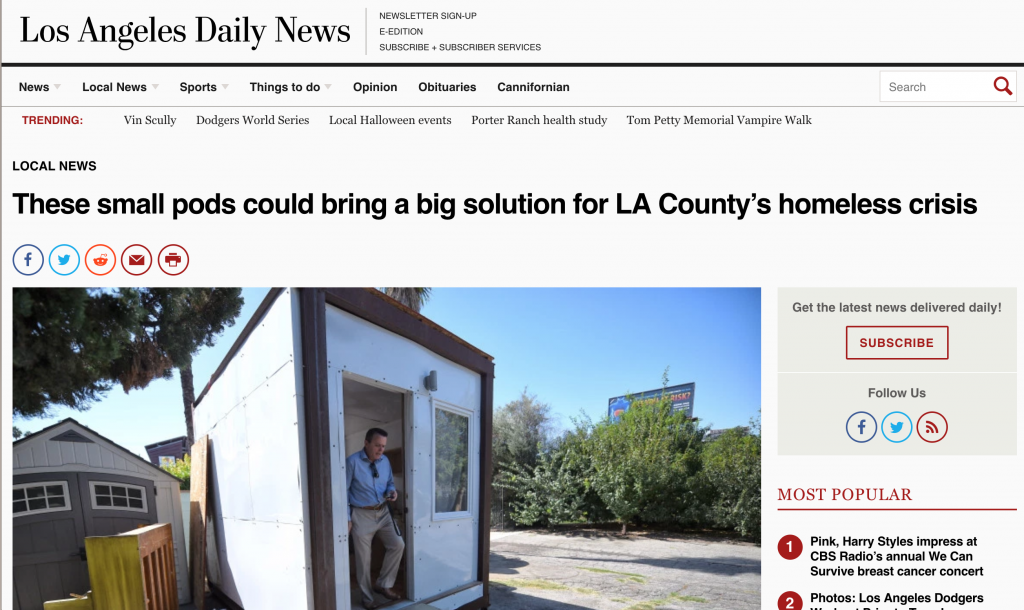
The futuristic mini-modular home sitting inside a church parking lot in Van Nuys holds only a single bed, a small desk, and some shelves.
But for the team of fourth year USC architecture students who designed it, the modest 92-square-feet structure could become key to temporarily easing homelessness across Los Angeles — and even the Golden State — until people find permanent housing.
They call the units Homes for Hope. It’s a first step, say creators, on one’s journey home.
“They are that transition from the streets back into housing that has more humanity,” said Sofia Borges, acting director for the MADWORKSHOP Homeless Studio at the USC School of Architecture. With the support of MADWORKSHOP founders David and Mary Martin, Borges and boardmember R.Scott Mitchell lead a team of architecture students to create what they called a compassionate design to solve the homeless crises in Los Angeles.
Made of a steel frame with structural insulated panels and aluminum cladding, the units resemble camper shells, with sliding windows. They can be heated and cooled, and stacked to create a community on vacant lots for 30 people or less. Social services, a community space and bathroom facilities also could be provided with additional funding.
The units would be easy to assemble and would sit on land temporarily. They are built to be easily removed, too, Borges added, and under California Senate Bill 2, passed in 2008, emergency housing of no more than 30 beds can be opened in certain districts within a community. No conditional use permit would be required.
But there was one potential barrier: bureaucracy.
The city of Los Angeles’ permitting process for such homes is intensive and can take years. So, instead of getting tangled in red tape, Borges and the team worked with various city departments and collaborated with Hope of the Valley Rescue Mission, a Van Nuys-based nonprofit organization that provides services to homeless people.
With members of the private, public and nonprofit sectors all working together toward one goal, they chiseled away at a design until they came up with a unit that not only was up to code, but included input from homeless people.
“I was amazed at how all the doors opened for us,” Borges said, of the city’s response, including the Mayor’s office. “We wanted to use straightforward materials. We wanted to use materials the city’s building and safety department were comfortable with.”
The next step is to get the units state certified so that the teams can begin mass production, Borges said.
“If we get the unit itself pre-certified we don’t have to go through the permitting process each time we want to make more,” she added.
That certification process, along other fees and licensing will cost $100,000. That’s where Ken Craft, the executive director for Hope of the Valley, stepped in to help.
Hope of the Valley already operates several services across the San Fernando Valley, including a recuperative center in Mission Hills, where homeless people discharged from hospitals can heal.
Craft’s goal is to inform foundations about the units, show them the prototype based at the Hope of the Valley offices in Van Nuys and quickly raise the money for the certification fees. Individual units would cost about $25,000, would be factory produced and sent to the sites. He said he’d like to see the units on land by next summer.






